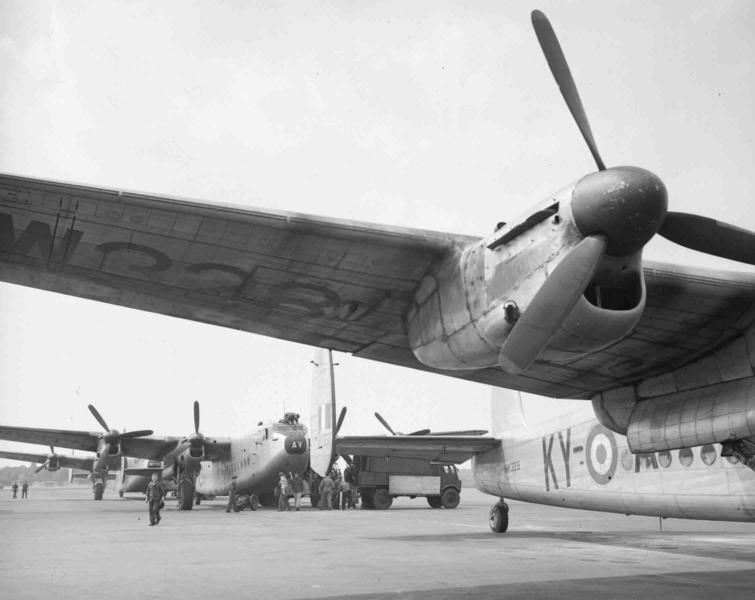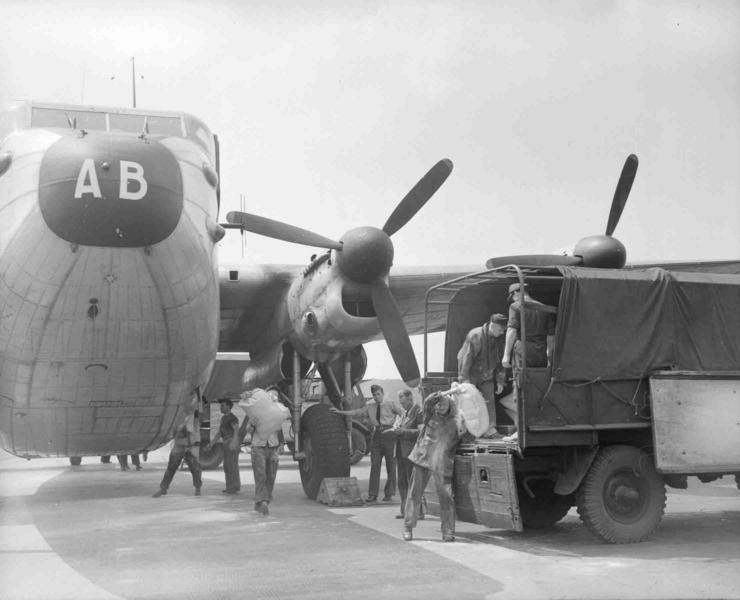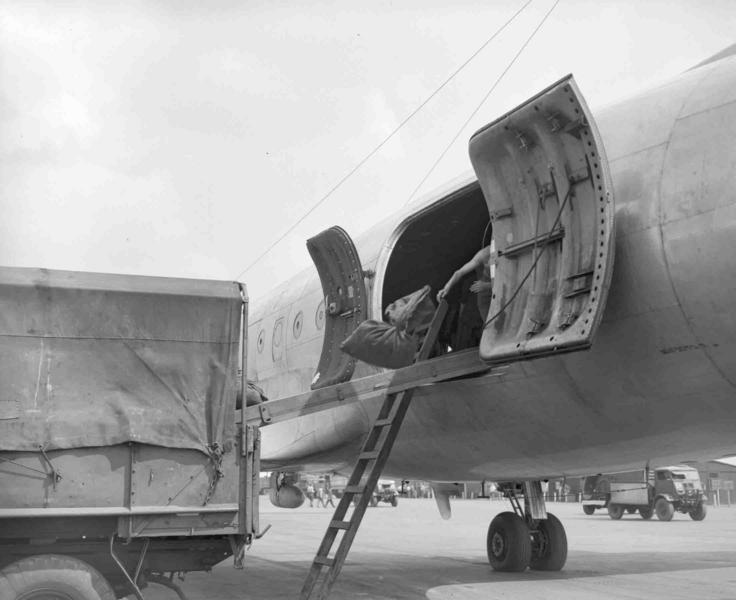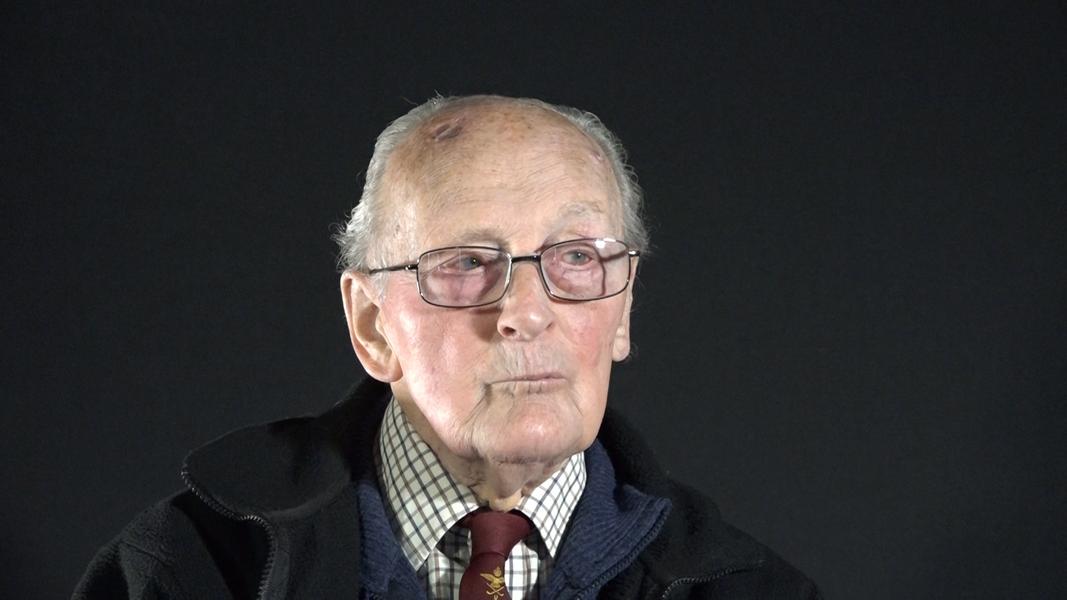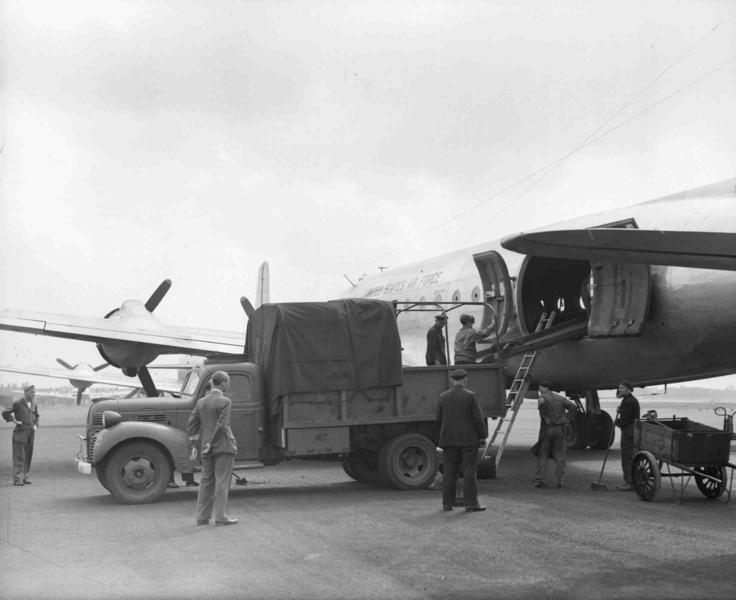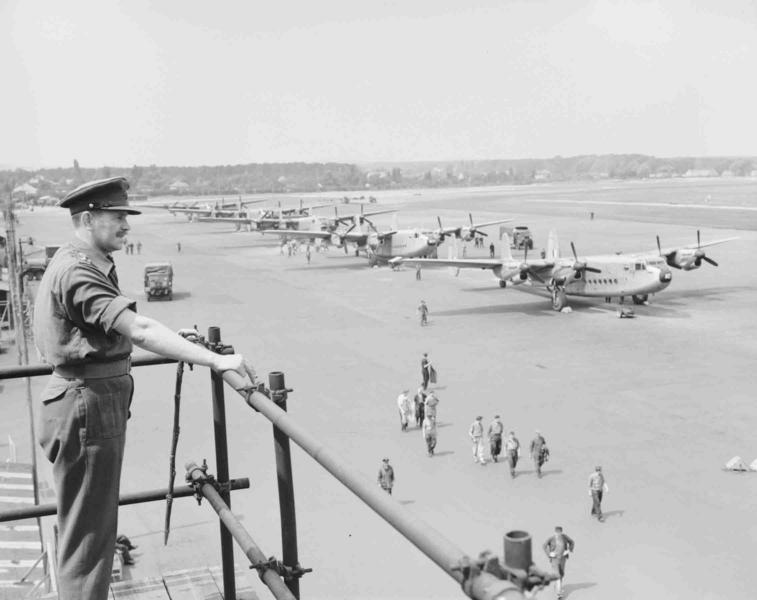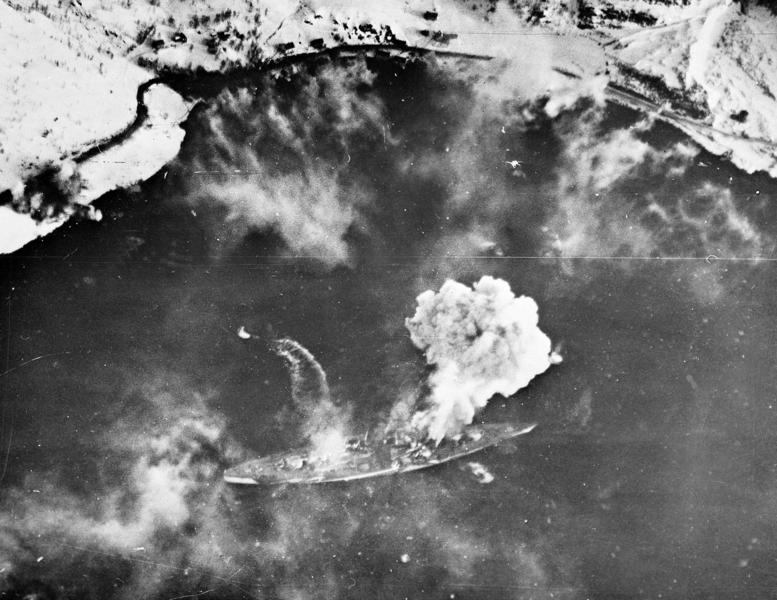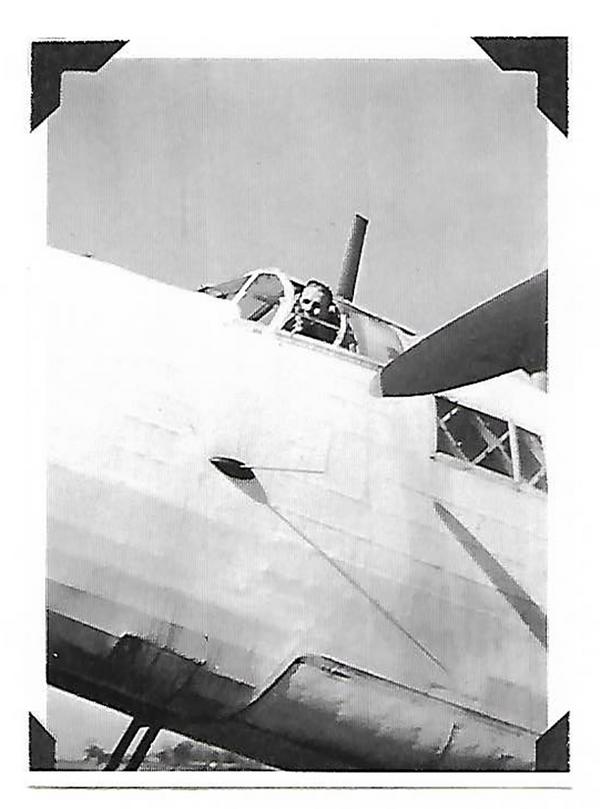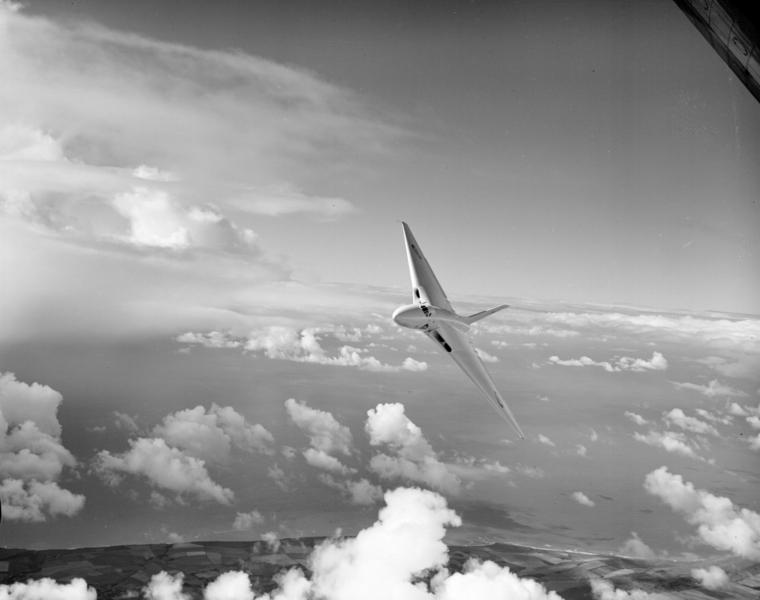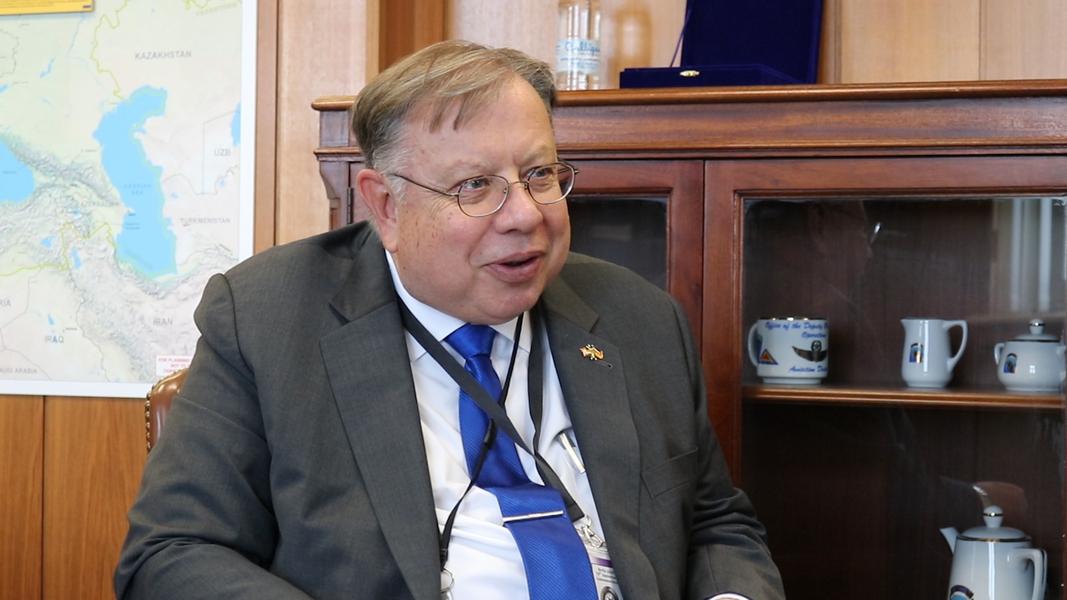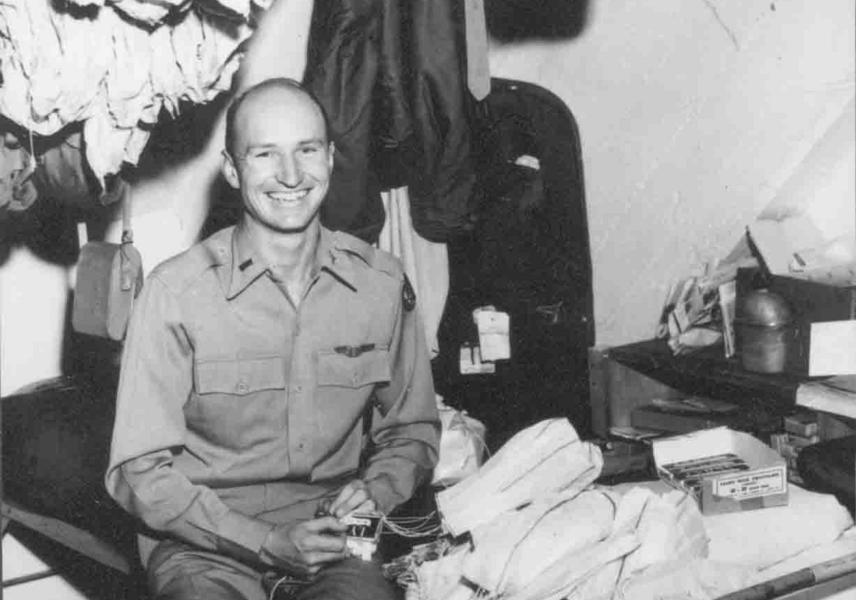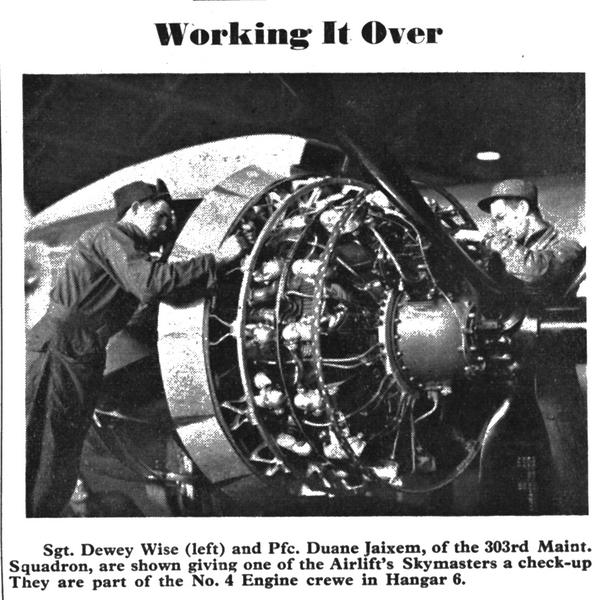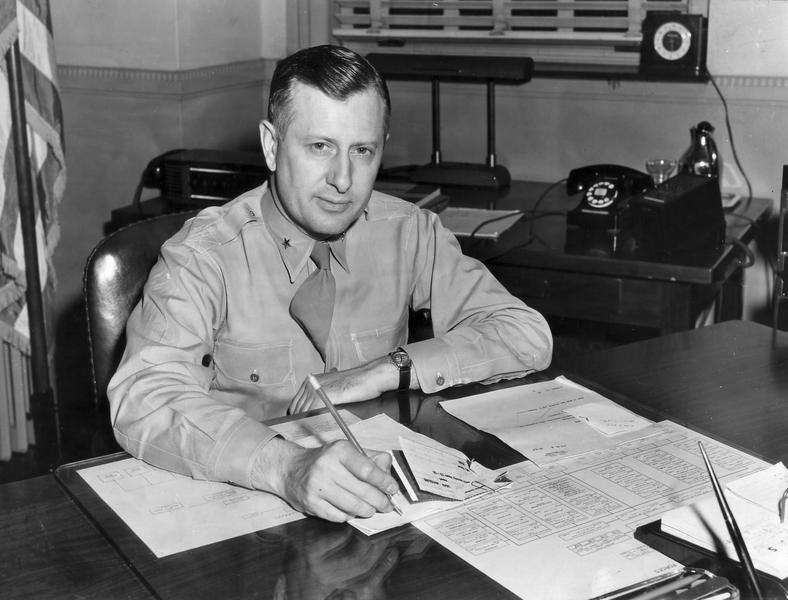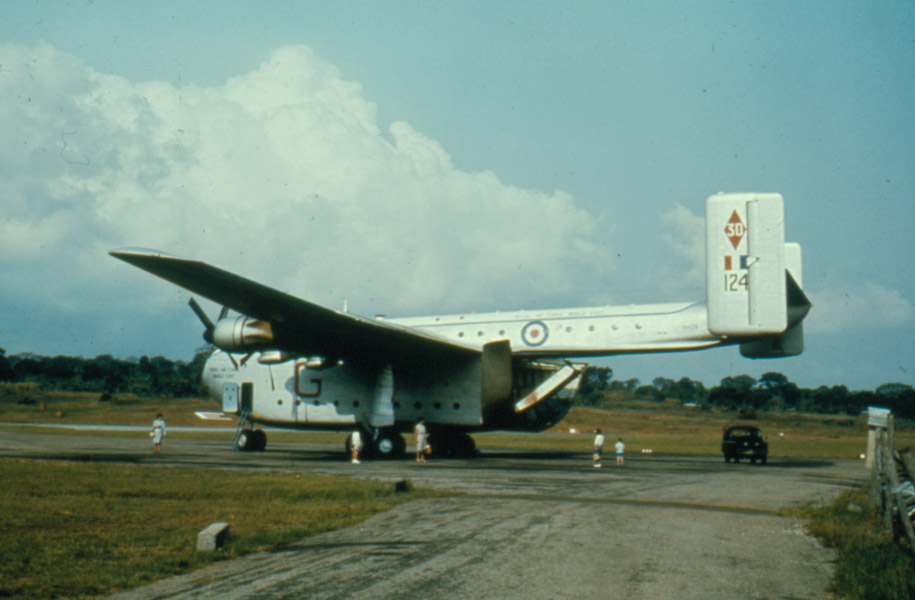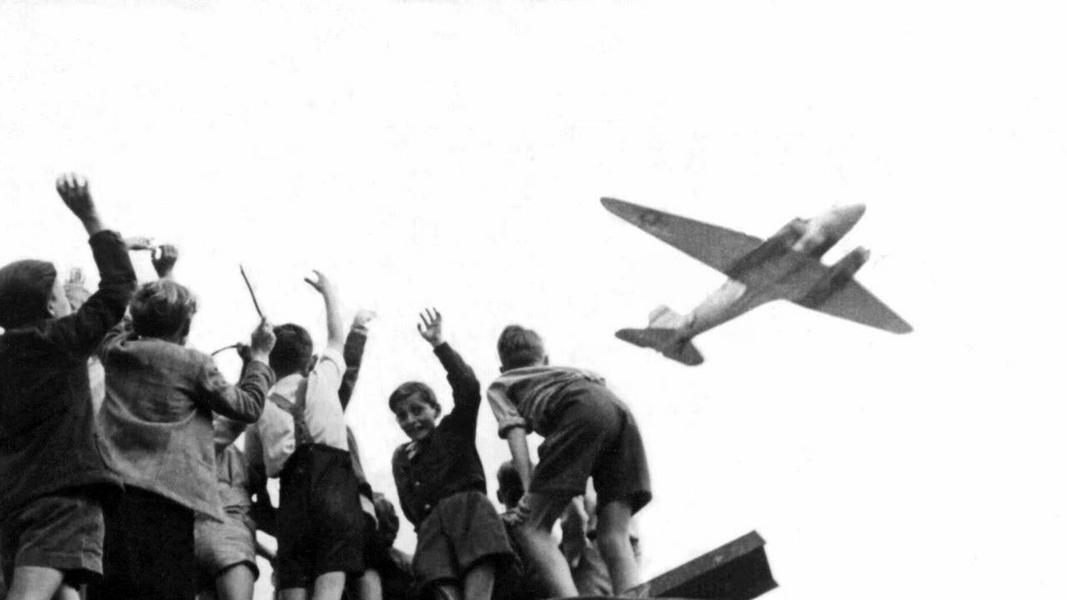because the corridors,
they say they were 20 miles wide
that we used for going in and coming out.
If you strayed from the corridor
there were always MiGs, fighters waiting to buzz you
as much as to say, "Get back into your right lane."
And planes were fired on occasionally.
We had one of our aircraft came back with a shell
that hadn't exploded lodged in its radar set.
The tricky conditions, of course, were the winter months.
You get November, December, January, February,
those four months where a cloud base of 500 feet,
well flying in those conditions.
Th navigators in particular had very tricky job then
because the plane had to fly low,
the navigator had to pick out salient points on the route,
maybe a railway crossing, a river,
church, things like that.
So it was very, very hard work for 'em there
but they managed it.
I think there were only about three days
in the whole of the time from June
to the following September when we didn't fly.
And that was because of snow-bound runways.
And we couldn't get off,
couldn't get off the ground.
There were obviously crashes, things like that
because there were nearly 70 people lost their lives.
That was American and British combined.
